Introduction
Navigating the complex world of sensory processing in children with autism spectrum disorder (ASD) can be a challenging journey. These children may grapple with hypersensitivity or hyposensitivity, each experiencing a unique blend of sensory sensitivities. Understanding these challenges is crucial, as they can significantly impact behavior, development, and learning.
Fortunately, there are evidence-based practices such as Ayres Sensory Integration™ (ASI) that aim to improve occupational performance and support mental health in children with ASD. Recent research highlights the importance of addressing sensory processing difficulties and provides resources and strategies to help parents advocate for their children's well-being. By combining knowledge, support, and ongoing research, we can forge pathways towards better understanding and effectively assist those with ASD in navigating their sensory world.
What are Sensory Processing Issues?
Navigating the complex world of sensory processing in children with autism spectrum disorder (ASD) can be a challenging journey. These children may grapple with hypersensitivity, where sensory input feels overwhelming, or hyposensitivity, where it's diminished – each child experiences a unique blend of these sensitivities. This can manifest as difficulty with processing sights, sounds, tastes, smells, balance, touch, as well as awareness of body position, movement, and internal body cues.
Consider the tactile, proprioceptive, and vestibular systems, which are fundamental to how we interpret our environment and move within it. For many with ASD, these systems don't integrate sensory information in typical ways, leading to a profound impact on behavior, development, and learning. To address these sensory-motor challenges, occupational therapists may use Ayres Sensory Integration™ (ASI), an intervention developed over half a century ago.
ASI and similar evidence-based practices aim to improve occupational performance and support mental health by helping children better process and integrate sensory information.
Recent research underscores the importance of understanding sensory processing difficulties in ASD. For instance, studies are exploring the shared neural circuit mechanisms behind the condition's symptoms, including sensory hypersensitivities. This research is crucial as sensory challenges can significantly affect the quality of life, making everyday environments like schools or public transport overwhelming.
Parents seeking to support their children can benefit from educational resources such as online learning series offered by autism specialists. These provide not only in-depth insights into sensory processing but also practical strategies tailored for home, classroom, or workplace settings. It's through this combination of knowledge, personalized support, and ongoing research that we can continue to forge pathways towards better understanding and effectively assisting those with ASD in navigating their sensory world.
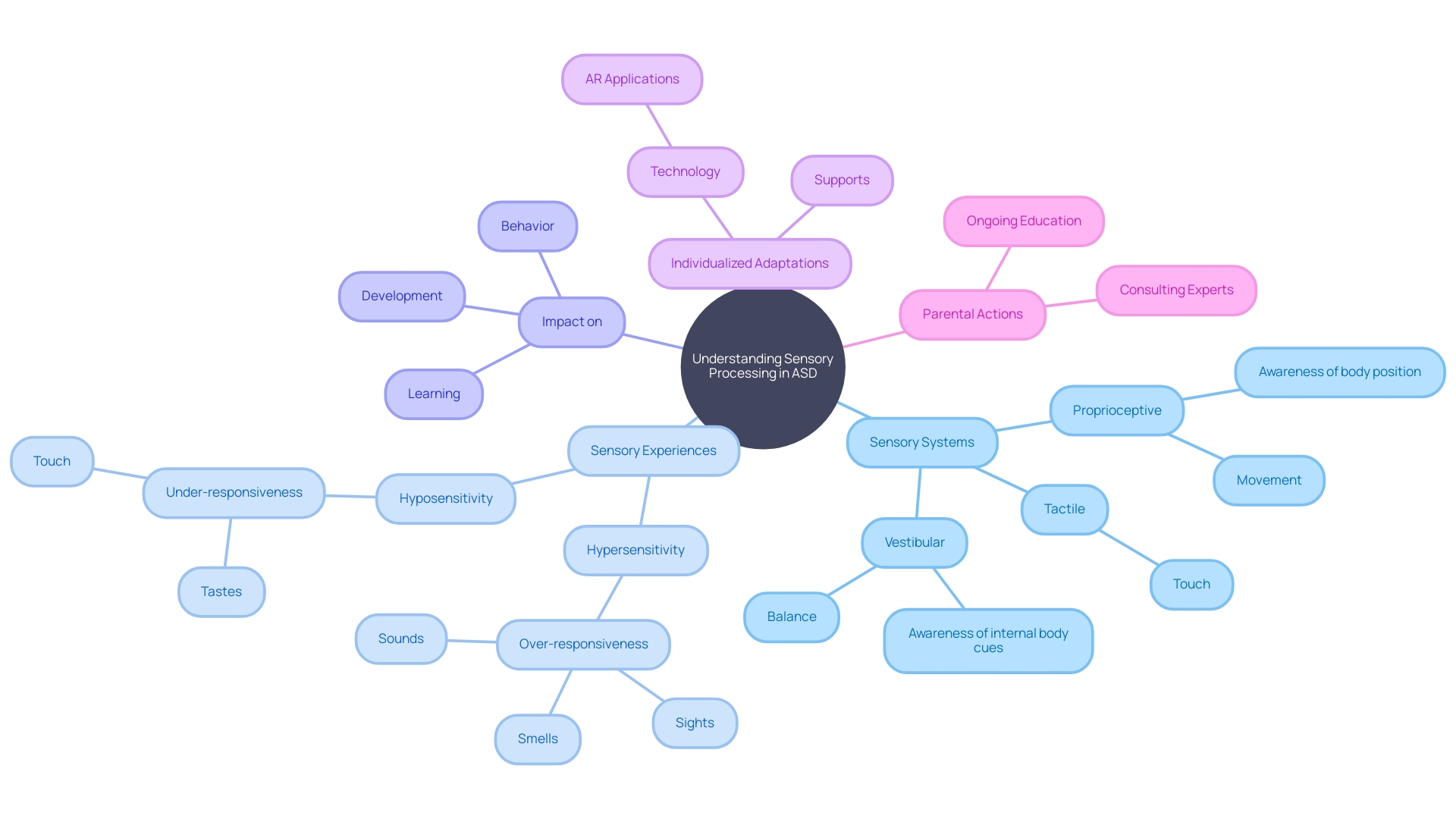
Types of Sensory Challenges: Oversensitivity and Undersensitivity
Children with autism may experience the world in a unique way due to differences in processing sensory information. They might be hypersensitive, finding sounds, sights, or textures overwhelming, a condition that can make environments like school or shopping centers challenging. Conversely, some children may show hyposensitivity, which means they might not react to sensory inputs as expected, seeking out more intense sensory experiences to feel comfortable.
An understanding of these sensory processing variations is fundamental in providing the right support.
Autism specialists highlight the need to acknowledge the tactile, proprioceptive, and vestibular systems, which relate to touch, body awareness, and balance. In fact, it's essential to recognize the wide range of common sensitivities from sights and sounds to smells and touch that individuals with autism may find difficult to navigate. This knowledge is not just academic; it's practical, offering a pathway to tailor support in everyday settings and enhance learning and development.
By delving into these sensory experiences, we can offer more empathetic and effective support. For instance, sensory activities are not only enjoyable but can also foster essential skills like language development and self-regulation. Embracing a holistic approach that considers emotions, behavior, and environmental awareness can empower children with autism to communicate their needs more effectively and build healthier relationships.
Understanding sensory challenges in autism is not just about identifying issues but about transforming awareness into action through practical strategies and resources. Such initiatives can make a profound difference in the lives of those with autism, helping them to thrive in a world that can sometimes be overwhelming or understimulating.
Signs and Symptoms of Sensory Processing Challenges
Understanding and recognizing sensory processing issues in children with autism spectrum disorder (ASD) is a critical step for effective support and intervention. Children with autism may demonstrate hypersensitivity, reacting intensely to stimuli that are typically tolerable for others, or hyposensitivity, where they appear under-responsive to their environment. This dichotomy in sensory experiences can manifest in various ways, including difficulty with transitions from one activity to another, challenges in motor coordination, or extreme responses to textures or tastes that may seem benign to most people.
Autism specialists emphasize that every sense—including sight, sound, taste, smell, and touch, as well as balance and body awareness—can be affected in children with ASD. These sensory challenges can significantly influence a child's behavior, development, and learning outcomes. For instance, an overwhelming classroom environment could lead to a meltdown as a result of auditory hypersensitivity.
Alternatively, a child may not notice when they are being called or might appear clumsy due to proprioceptive difficulties.
Occupational therapists have developed interventions such as the Ayres Sensory Integration™ (ASI), which is tailored to aid children in processing and integrating sensory information. This evidence-based approach is designed to enhance occupational performance and academic achievement, and it has been found to positively impact mental health and behavior.
Parents and caregivers play a crucial role in supporting children with sensory processing challenges. Tailored interventions and strategies provided by health professionals, like those described in the CHESS trial, are intended to alleviate stress in family life and promote early self-care and independence in children with neurodisabilities. Moreover, sensory activities are not only beneficial for soothing and regulating a child's sensory system but also for bolstering cognitive development and enhancing learning retention.
It's important to acknowledge that the COVID-19 pandemic has had a profound impact on children, especially those from marginalized communities, highlighting the need for additional support and resources for children facing significant health and wellness challenges. Recognizing the signs and symptoms of sensory processing issues is the first step toward providing the necessary interventions and creating a supportive environment for children with ASD.
How Sensory Issues Affect Children in the Classroom
Navigating the sensory landscape of a classroom can be a daunting task for children with autism, whose sensory processing issues may lead to an overwhelming experience. Amidst the lively chatter and bustling activity, these children might struggle to maintain focus, which can manifest in heightened anxiety or behavioral challenges. To foster an environment conducive to their learning and growth, it is essential to collaborate with educators in tailoring the classroom setting to their unique sensory profiles.
Creating a sensory-friendly classroom often involves the use of specialized tools and strategies. For example, the introduction of AV1 robots in Sweden exemplifies an innovative approach to support children unable to attend school due to illness. While initially intended for children suffering from long-term sickness, the presence of an AV1 robot can provide a sense of security and support, even if it remains unused, as it represents a ready-to-use aid in times of need.
In addition to technological aids, educators can employ self-reflective strategies. By modeling self-regulation techniques, such as taking deep breaths during moments of frustration, teachers can demonstrate to students how to manage their own sensory challenges. Furthermore, the establishment of sensory spaces within educational settings allows students to practice self-management skills.
These spaces, which can range from a small corner to a full room, are tailored with tools that support cognitive, motor, social, and self-regulation skills development.
The importance of an integrative and holistic framework cannot be overstated. This approach aims to cultivate self-awareness, self-regulation, and communication of needs in highly sensitive children. By focusing on emotional, environmental, spiritual, and relational connections, this framework equips children with the tools they need to navigate the sensory complexity of their world.
Dr. Temple Grandin, a renowned advocate for individuals on the autism spectrum, emphasizes the significance of creating adaptable learning environments. She suggests considering sensory sensitivities when selecting classroom materials, such as ensuring that LED lights do not flicker, to accommodate those with visual and auditory processing challenges.
Classroom noise is another critical factor that can impede learning. A study revealed that children spend approximately 90% of their school day listening in the presence of distracting sounds, with noise levels reaching up to 77 dB(A) during group work. Such an environment can strain the listening effort of children, affecting their comprehension and motivation.
Individual characteristics, such as reading comprehension and inhibitory control, play a role in moderating the impact of noise, emphasizing the need for acoustic design that supports the well-being and academic success of all students.
In sum, by understanding and addressing the sensory processing challenges faced by children with autism, we can create inclusive and supportive educational environments that empower them to thrive academically and socially.
Classroom Strategies to Support Children with Sensory Issues
To foster a nurturing environment for children with sensory processing issues, it's essential to integrate strategies that cater to their unique sensory needs. Sensory breaks can serve as a soothing interlude, allowing children to recalibrate their senses. Designing a quiet corner within the classroom provides a serene retreat from sensory overload, where visual and auditory distractions are minimized.
Movement breaks interspersed throughout the day, along with activities that engage gross motor skills, can significantly enhance these children's ability to process sensory information.
These strategies echo the principles of an Integrative and Holistic Framework, which emphasizes the development of self-awareness, self-regulation, and the ability to articulate personal needs and emotions. By nurturing these competencies, we equip children with the foundations for healthy emotional and behavioral regulation, fostering connections with their environment, and cultivating meaningful relationships.
This approach is reinforced by recent educational initiatives that underscore the importance of supporting students with disabilities to reach their full potential. The creation of additional support classes is a testament to the commitment to remove educational barriers and promote inclusivity. Such measures align with the findings of studies which highlight the benefits of a tailored learning environment, especially for those with sensory sensitivities.
A comprehensive understanding of these strategies, underpinned by insights from educators and experts, can empower children with sensory processing issues to thrive not just academically, but emotionally and socially. It's through these concerted efforts that we can create an educational landscape where every child has the opportunity to succeed.
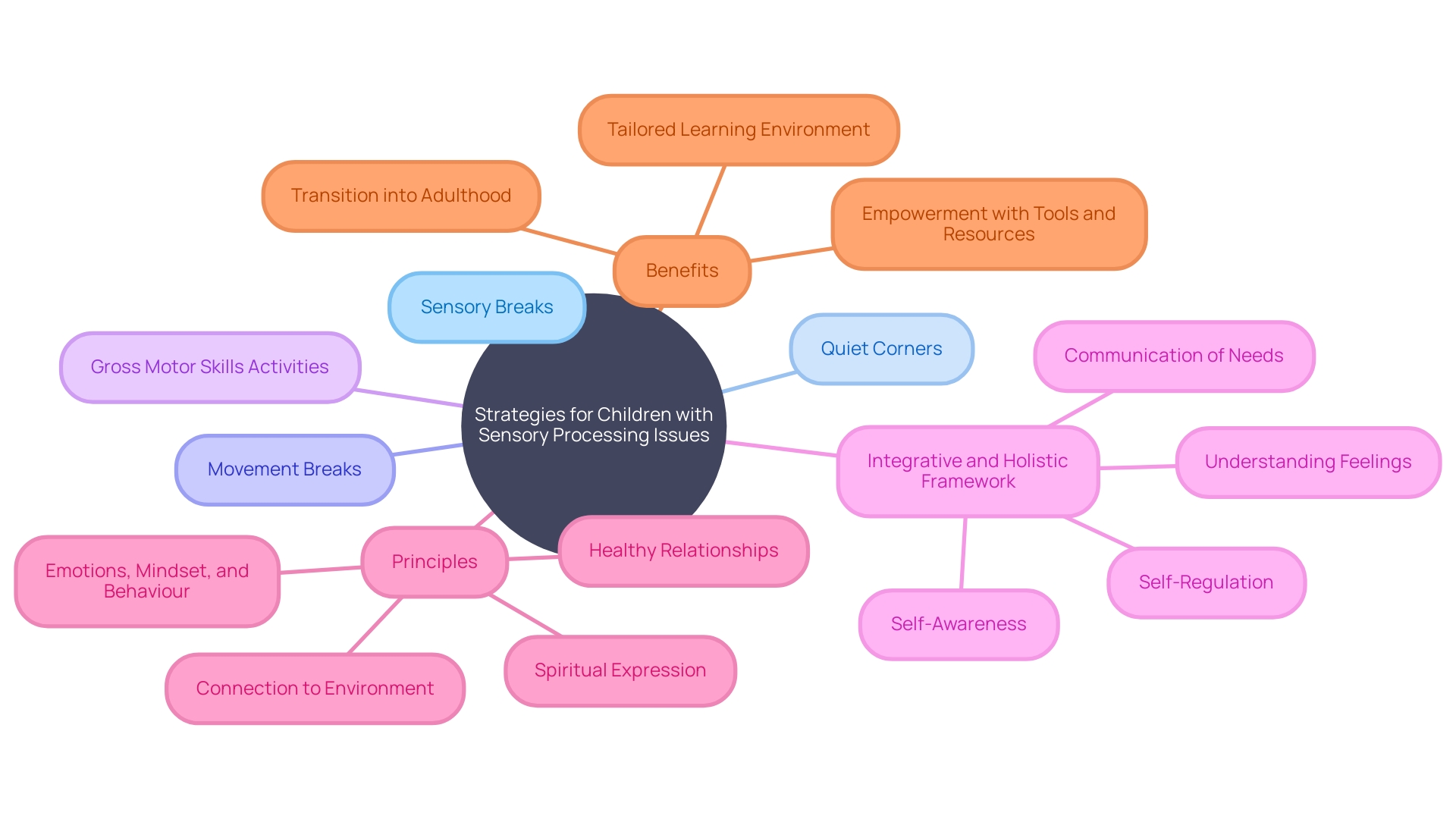
Providing Heavy Work Opportunities
Heavy work activities play a vital role in sensory integration, especially for children experiencing sensory processing challenges. Developed over half a century ago by occupational therapist A. Jean Ayres, the Ayres Sensory Integration™ (ASI) is a therapeutic approach that addresses these challenges. It is rooted in evidence-based practice (EBP), which combines research evidence, clinical expertise, and client preferences to guide clinical decision-making.
These activities, which include tasks like carrying, pushing, or pulling weighted items, or engaging in muscle-strengthening exercises, are not just random exercises. They are strategic movements that provide deep proprioceptive input, essential for helping the nervous system to organize and calm itself.
Research underscores the importance of sensory activities, revealing their impact on occupational performance, academic achievement, behavior, and mental health. Sensory-rich play is also known to foster self-regulation, an essential skill for children as they grow. Christina Kozlowski, an Occupational Therapist, emphasizes that sensory toys curated in her Sensory TheraPLAY Box, engage multiple senses, which is crucial for sensory integration.
Additionally, sensory play supports physical development, including hand-eye coordination and spatial awareness.
The benefits of these activities extend beyond immediate sensory integration. According to a study, incorporating sensory-friendly practices into daily routines can significantly enhance brain connectivity, leading to better language, fine motor, and social skills. Moreover, the adaptability of sensory play makes it valuable for both sensory-sensitive and sensory-seeking children, promoting an inclusive environment where all children can explore and learn without the constraints of structured activities.
Design Thinking (DT), an innovative, multidisciplinary approach, has been adopted in healthcare to engage stakeholders and understand their needs. By applying DT's collaborative methods, the needs of autistic children in healthcare settings have been better understood, leading to improved participation during healthcare visits. This reflects a broader movement towards client-centered solutions in occupational therapy, highlighting the lifelong impact of sensory integration practices and the need for ongoing research and innovation to support children with sensory processing challenges.
Seating Modifications for Sensory Input
Creating an environment that accommodates the unique sensory needs of children with autism is an essential element of supporting their development. Innovations such as an AR application that transforms tactile feedback into visual and auditory signals, as prototype for dental patients with sensory sensitivities, exemplify the importance of multi-sensory approaches. In a similar vein, ergonomic considerations in educational settings can significantly enhance learning experiences.
For instance, integrating seating options that allow movement, like stability balls and wiggle cushions, can cater to the proprioceptive and vestibular systems, aiding in sensory regulation. This in turn can bolster attention and minimize restlessness, allowing children to better focus on educational tasks.
Dr. Temple Grandin, a prominent figure in the autism community, emphasizes the necessity for creating non-disruptive environments. She highlights the relevance of flicker-free LED lighting, which is just one aspect of sensory-friendly design. Echoing Grandin's advice, ergonomic studies have shown that sensory-friendly design is not just about comfort but about tailoring environments to meet the psychophysical needs of individuals.
By considering sensory ergonomics, designers can create spaces that are not only conducive to learning but also considerate of the nuanced sensory experiences of children with different processing abilities. These adjustments are crucial for fostering a supportive and productive learning atmosphere.
Keeping Hands Busy with Tactile Input
Tactile engagement is a key component in supporting children with sensory processing difficulties, often associated with Autism Spectrum Disorder (ASD). Interactive objects like fidget tools, stress balls, or textured materials can serve as vital resources for these children. They provide an outlet for sensory input that can help maintain focus, reduce anxiety, and facilitate more effective learning and interaction with the environment.
Incorporating sensory play into daily activities has been reported to significantly improve language skills, fine and gross motor skills, social skills, and self-regulation abilities. For instance, a child who learns through a sensory-rich experience may grasp and retain concepts more quickly than through traditional methods. Moreover, recent advancements in haptic technology have brought about innovative ways to cater to tactile sensitivities.
This technology translates physical sensations into visual or auditory cues, which can be less overwhelming for individuals with heightened sensitivity to touch.
Furthermore, a study led by Dr. Shaun Macdonald focused on reducing stress levels through silently-vibrating handheld devices, demonstrating the potential of subtle, tactile feedback in managing anxiety. This approach aligns with the ethos of companies like Solobo, which champion the limitless creative potential unleashed by sensory play. As children explore different sensory inputs, they are empowered to think creatively and express themselves freely—key skills for neurodiverse individuals navigating a world full of diverse stimuli.
Movement Breaks and Gross Motor Activities
Sensory activities are not only a source of delight for children but also a crucial tool for enhancing their developmental skills. By engaging a child's senses of touch, smell, sight, taste, and hearing, as well as their vestibular and proprioceptive systems—which are responsible for balance and body awareness—sensory play can significantly boost language acquisition, fine and gross motor development, social abilities, and self-regulation. An added bonus is that these activities are not limited to children with sensory processing difficulties; they benefit all children by enriching their learning experiences.
One parent's testimony revealed how incorporating sensory-friendly activities into daily routines for over five years has produced remarkable, even life-altering, results. These activities help synchronize a child’s sensory systems, which in turn fosters stronger neural pathways and connections within the brain. This is exemplified by the parent's observation that their son could retain new information better when learned through sensory play compared to traditional methods.
In the context of autism, where sensory processing can be particularly challenging, with individuals often experiencing either heightened sensitivity or reduced responsiveness across various stimuli, the importance of tailored sensory experiences becomes even more pronounced. These sensory differences can significantly influence behavior, learning, and development, necessitating the need for specialized strategies to assist autistic individuals in managing their sensory needs.
Moreover, recent advances in research, such as the CHESS trial, underscore the profound impact that early, tailored support can have on the self-care and independence of children with neurodisabilities, and by extension, on the well-being of their families. This trial emphasizes the collaborative efforts of children, families, therapists, and researchers to develop research programs that address the crucial needs of this community.
Furthermore, evidence-based practice in sensory integration has evolved over the last 50 years, with a wealth of research backing the effectiveness of sensory integration interventions in improving various aspects of children's lives, from occupational performance to mental health. Occupational therapists are keen on implementing these interventions, which are grounded in robust research, clinical expertise, and the individual needs and preferences of their clients.
All these insights converge to highlight the transformative power of sensory activities, not just as a therapeutic intervention, but as a fun and engaging part of everyday life that can help all children, including those with autism, to navigate and make sense of the world around them.
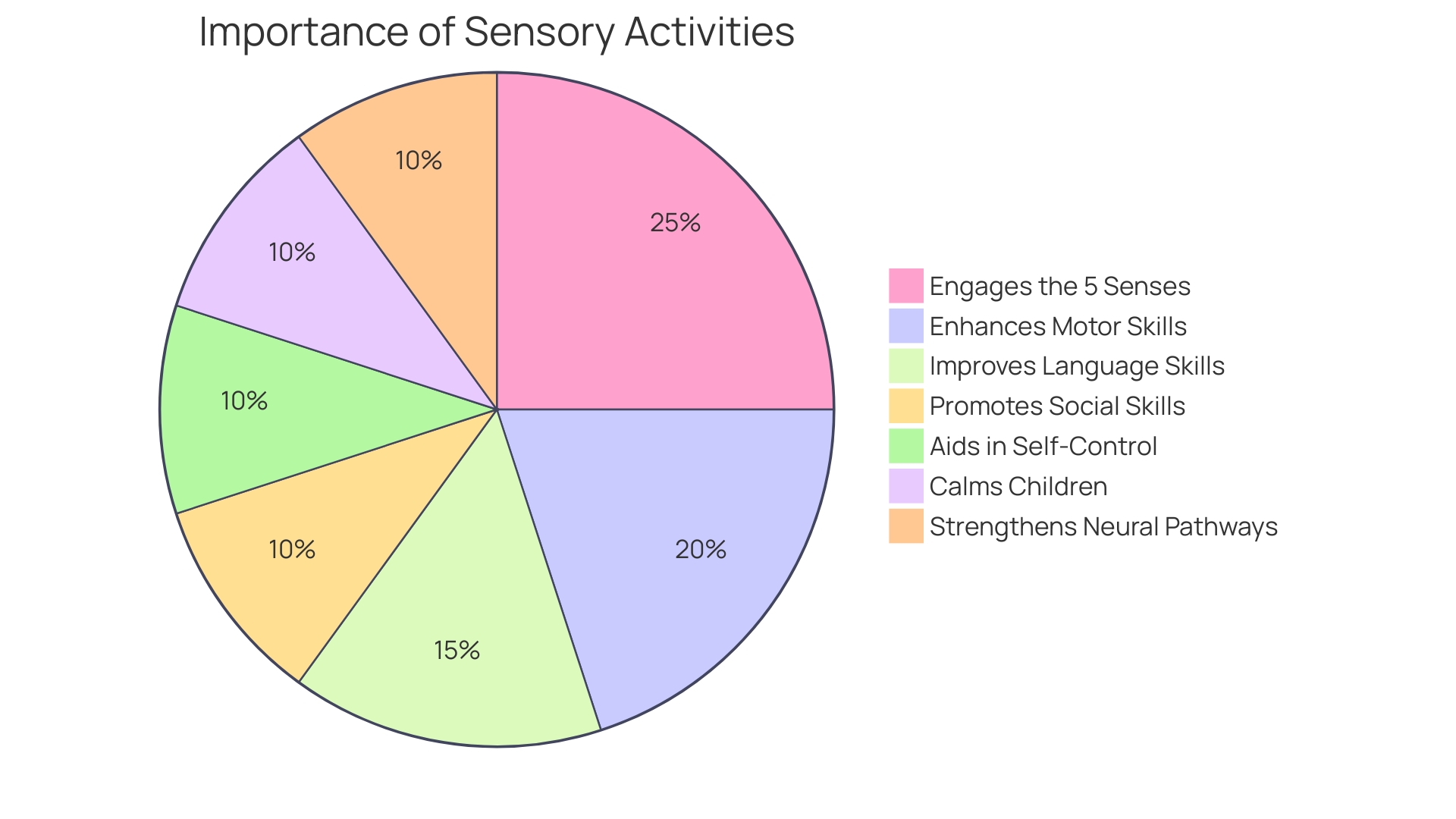
Reducing Visual and Auditory Stimulus
Creating a classroom that accommodates children with sensory processing issues is not only about understanding their unique sensory needs, but also about tailoring the environment to promote focus and learning. For instance, visual schedules can serve as a roadmap through the day's activities, helping to reduce anxiety about unexpected events. By minimizing clutter, we limit sensory overload and create a calm space that can enhance concentration.
Additionally, considering noise-reducing strategies such as personal listening devices can protect against hearing damage and reduce distractions, as studies show that children are particularly sensitive to high-frequency sounds. Dr. Temple Grandin, a renowned advocate for individuals with autism, emphasizes the significance of non-flickering LED lights in creating a conducive learning environment. This is backed by a simple test using a slow-motion video to check for flicker, ensuring a visually stable space.
Moreover, the incorporation of sensory spaces in educational settings has proven to be beneficial. These dedicated areas provide a multisensory experience that can be aligned with curriculum themes, like an astronomy lesson being enhanced with galactic projections, to bolster cognitive and motor skills development. Ultimately, by integrating these thoughtful modifications, we can foster an inclusive and supportive classroom where all students, including those with sensory sensitivities, have the opportunity to thrive.
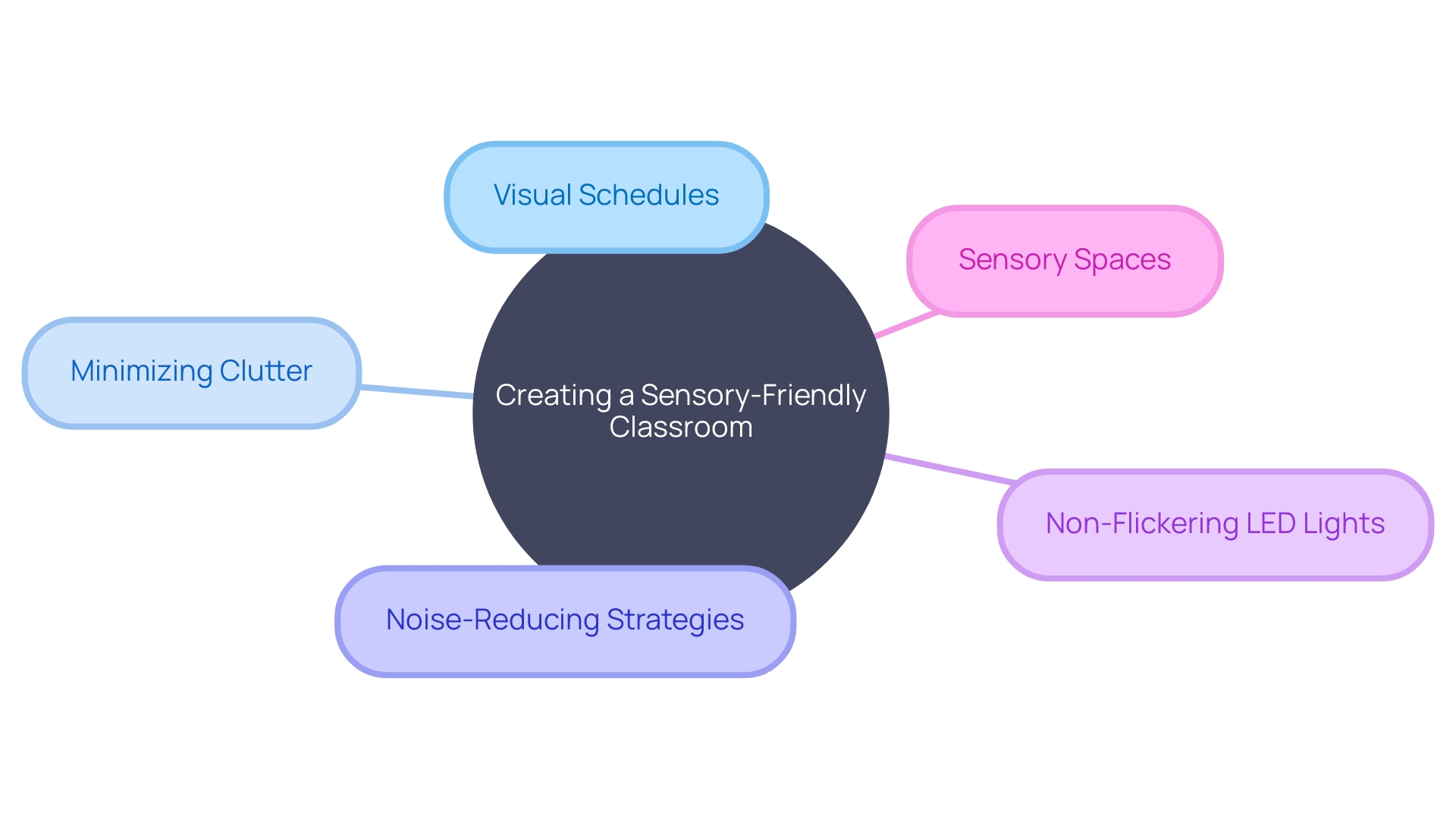
Snack Time Strategies for Oral Proprioception
Snack time is not just a break in the day; it's a powerful moment to enhance oral sensory awareness, especially for children experiencing sensory processing challenges. The act of chewing crunchy vegetables or enjoying chewy treats serves more than just a nutritional purpose. It actively engages oral proprioception, the sense that helps us control and understand movements and positioning within the mouth and jaw.
By incorporating snacks that cater to this sensory input, children can better regulate their sensory needs, aiding in their overall comfort and development. Always mindful of individual needs and dietary considerations, selecting the right snack options can make a significant difference in a child's sensory experience.
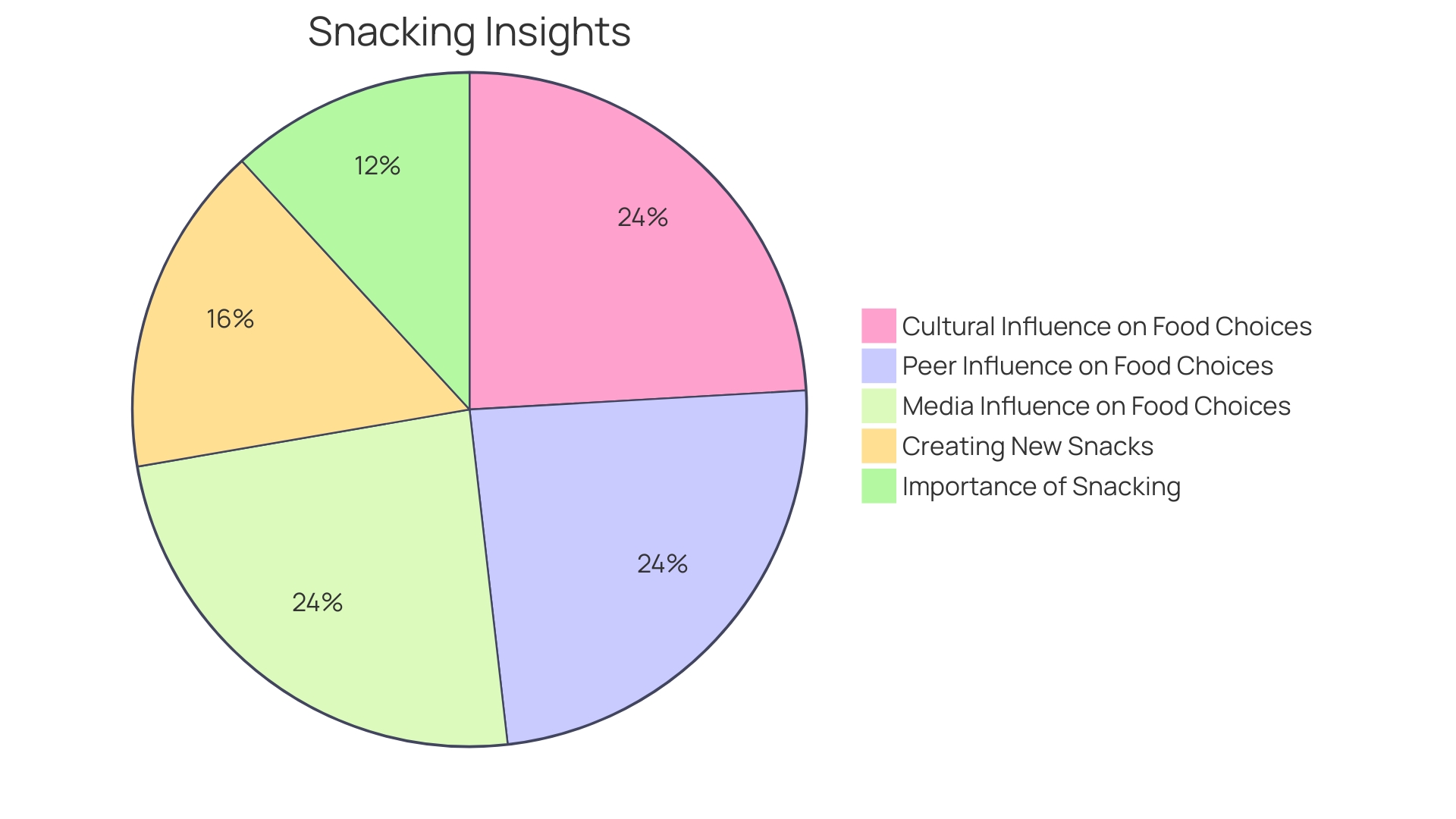
Building Self-Regulation Skills
For children grappling with sensory processing issues, the ability to self-regulate is a vital skill that can greatly enhance their day-to-day functioning. Implementing an Integrative and Holistic Framework, which focuses on fostering self-awareness in Highly Sensitive Children, is a powerful strategy for teaching self-regulation. This approach is designed to help children recognize their sensory needs and respond to them in a healthy way.
According to recent studies, mindfulness meditation—defined as paying attention purposefully, in the present moment and without judgment—can be particularly effective. Engaging in practices like deep breathing and mindfulness can be self-administered, offering a cost-effective and accessible means for children to manage their sensory experiences.
Moreover, the Ayres Sensory Integration™ intervention, developed over 50 years ago, is still recognized as a significant method for addressing sensory-motor challenges. Research underscores the importance of evidence-based practices in this area, which combine the best available research with clinical expertise and the individual's preferences.
The recent research by the University of Derby suggests that interventions like compassionate mind training (CMT) can have a positive impact on child mental health. This indicates the potential benefits of well-being interventions in school settings for improving prosocial behaviors and mental health outcomes.
By equipping children with self-regulation techniques and integrating them into educational curriculums, we can support their overall well-being and success, paving the way for a smoother transition into adulthood equipped with the necessary tools to stay empowered.
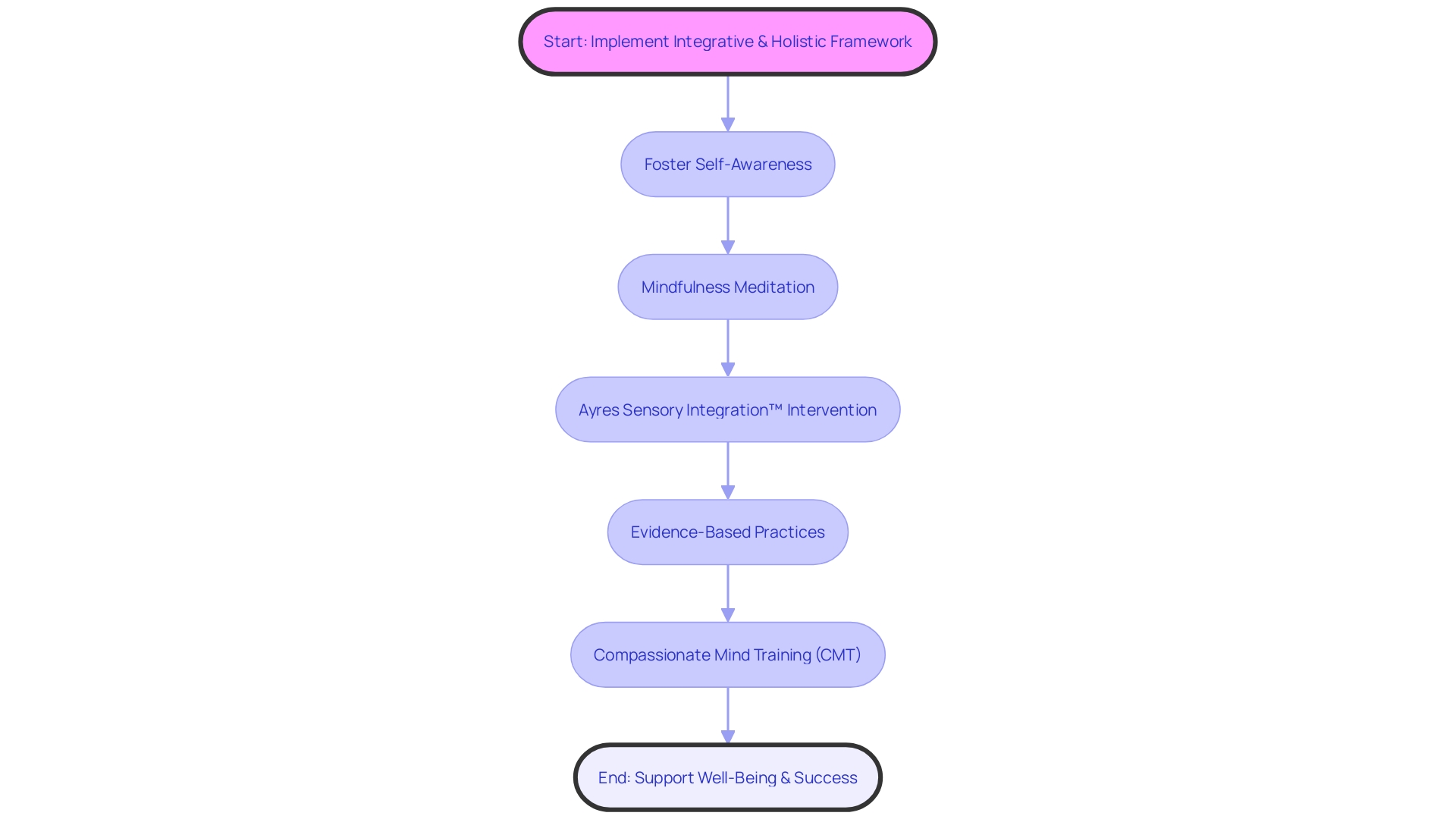
Giving Instructions and Completing Assignments with Sensory Considerations
For children with autism, sensory processing can be a challenging aspect of their daily lives. They may experience heightened sensitivity or diminished response to sensory input, which can manifest in unique ways, from discomfort at the touch of certain textures to being easily overwhelmed by loud noises. To support these children in understanding and completing tasks, it's crucial to tailor our approach to their sensory needs.
One effective method is breaking down tasks into smaller, manageable steps. By doing so, we allow children to focus on one aspect of the task at a time, which can prevent sensory overload and make instructions more digestible. Additionally, visual aids such as pictures or charts can be invaluable.
They provide a clear and consistent reference that can be revisited as needed, catering to the visual strengths many children with autism have.
It's also beneficial to allow extra time for processing. This acknowledges that sensory processing issues can affect the speed at which children comprehend and act on new information. By offering this additional time, we reduce the pressure and frustration that can arise from feeling rushed.
A real-world application that illustrates this approach is the development of an Augmented Reality (AR) application designed for dental visits for patients with autism. This application transforms tactile sensations into visual and auditory signals, which can be more comfortably processed by individuals who are sensitive to touch.
Furthermore, incorporating sensory-friendly activities can greatly enhance a child's learning and development. Solobo, an educational toy company, highlights the importance of sensory play in fostering creativity and imaginative thinking. Sensory activities not only provide a calming effect but also strengthen neural pathways, enhancing learning retention and application.
To gain a deeper understanding of sensory processing in autism, educational resources such as webinars hosted by autism specialists can be invaluable. These resources delve into the complexities of the tactile, proprioceptive, and vestibular systems, offering practical strategies to support individuals with autism at home and in educational settings.
In conclusion, recognizing and addressing the sensory processing issues faced by children with autism is key to fostering a supportive environment. Through tailored instruction, sensory-friendly activities, and continuous learning, we can create conditions for success and minimize the potential for frustration and sensory overload.
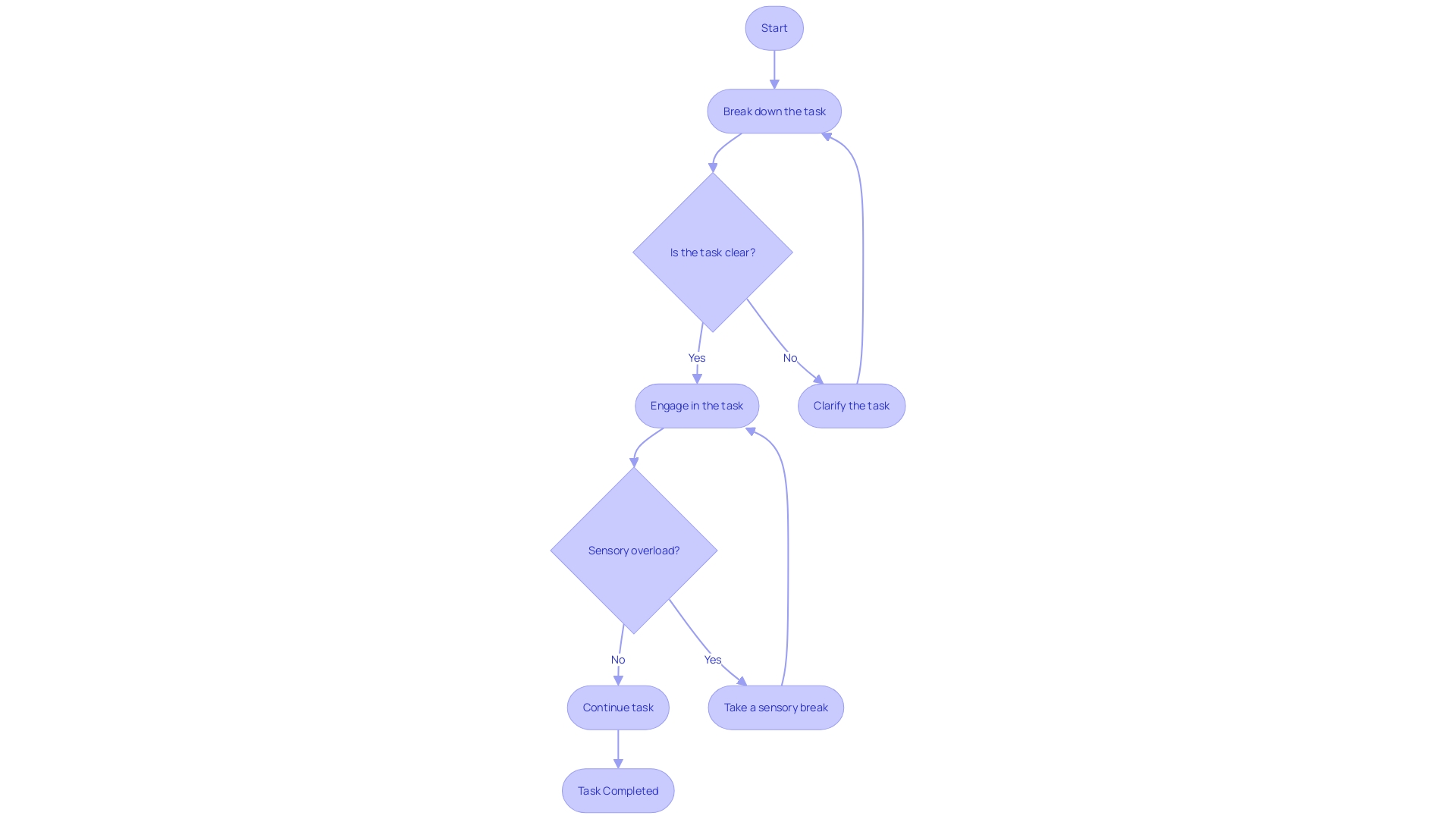
Creating a Quiet and Calm Work Space
Tailoring a workspace that caters to children with sensory processing issues is more than just a matter of comfort—it's a necessity for their cognitive and emotional development. Crafting an environment that minimizes overwhelming sensory inputs such as loud noises or intense lighting can significantly improve a child's ability to concentrate and perform tasks. This approach to space design, informed by the principles of ergonomics, not only enhances functionality but also respects the unique psychophysical needs of each individual.
As Dr. Temple Grandin emphasizes, considerations like non-flickering LED lights are not mere preferences but essential components for productive learning environments. By addressing the visual, auditory, tactile, olfactory, and even taste stimuli, we can create personalized havens that support the various ways children process sensory information. Such thoughtful design not only empowers children with sensory sensitivities to thrive but also reinforces the paramount role of our environments in shaping successful and happy lives.
Using Sensory Tools and Equipment
Sensory processing issues in children with autism can significantly affect their ability to engage with the world around them. To support these children, it's essential to understand the role of sensory tools and equipment designed to cater to their unique sensory needs. For instance, weighted blankets can offer a sense of security, helping with self-regulation, while noise-canceling headphones may reduce auditory overload, allowing children to focus and learn in noisy environments.
Sensory-friendly toys are tailored to provide appropriate sensory feedback without overwhelming the child, and fidget tools can improve concentration and reduce anxiety by keeping hands occupied.
To create an inclusive environment that truly accommodates sensory sensitivities, it's crucial to incorporate a holistic framework that fosters self-awareness and self-regulation in children. This integrative approach acknowledges the importance of emotions, behavior, environmental connection, spiritual expression, and the development of healthy relationships. By doing so, we lay the groundwork for children to grow into empowered adults, equipped with the tools to navigate their sensory experiences.
Moreover, engaging in sensory activities has been shown to provide broad developmental benefits. They can enhance language skills, fine motor and gross motor skills, social skills, and self-control. For example, Christina Kozlowski, an Occupational Therapist, emphasizes that sensory toys not only stimulate the senses but also promote vital physical development skills such as hand-eye coordination and spatial awareness.
Likewise, Courtney & Daniel from Solobo, a neurodivergent entrepreneur team, highlight the importance of sensory play in fostering creativity and imaginative expression in children.
By adopting sensory-supportive strategies and tools, we can make a profound impact on the daily lives of children with autism. It's not just about providing the right equipment but understanding the myriad ways these tools can enhance learning, social interaction, and overall well-being. With the right support, every child has the potential to thrive in their own unique way.
Consulting with Occupational Therapists
Occupational therapists (OTs) play a crucial role in enhancing the lives of children with autism who face sensory processing challenges. These professionals bring forth an integrative and holistic approach, targeting the development of self-awareness, self-regulation, and communication skills. They work closely with both the child and their support network to foster an environment that caters to sensory needs, employing strategies like the Ayres Sensory Integration™ intervention, which has shown to significantly impact children's occupational performance and overall well-being.
Understanding that children with autism might experience a blend of hypersensitivity and hyposensitivity, OTs are adept at personalizing interventions that address the unique sensory experiences of each individual. This could mean adapting environments to reduce overstimulation from sights, sounds, and other sensory inputs, or introducing sensory play to enhance creative thinking and self-expression.
The value of occupational therapy is highlighted by stories of individuals who have seen substantial improvements in their ability to engage in meaningful activities. These stories emphasize OTs' commitment to enabling children to live a fulfilling life by supporting their sensory needs in a manner that aligns with their personal goals and lifestyle.
Moreover, recent research underscores the effectiveness of sensory integration therapy developed by OTs. The evidence-based practice combines the latest research with clinical expertise and the child's preferences, ensuring that each strategy or tool introduced is grounded in scientific understanding and tailored to the child's unique sensory profile.
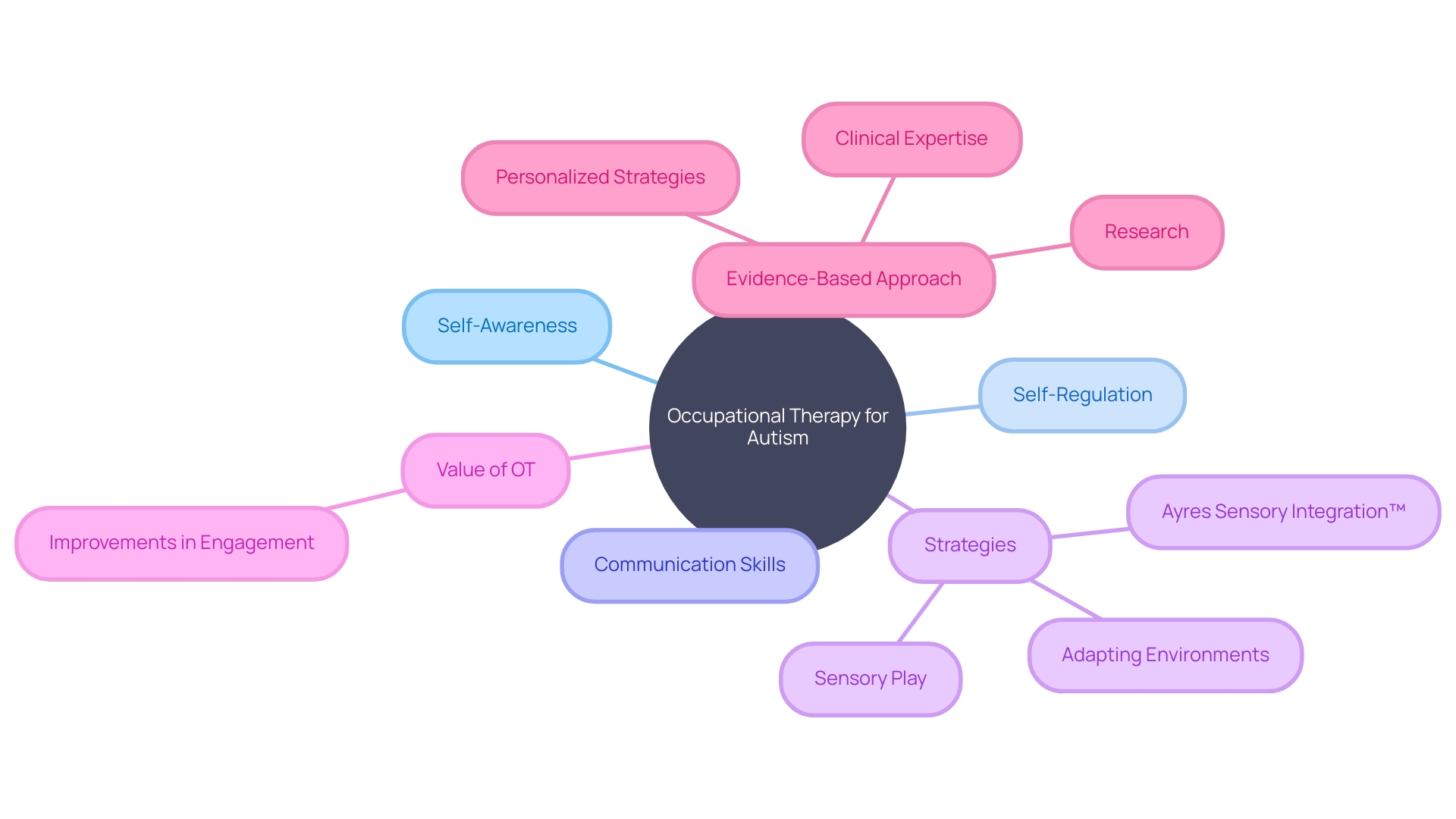
Conclusion
In conclusion, navigating sensory processing challenges in children with autism spectrum disorder (ASD) can be challenging. However, with knowledge and support, parents can advocate for their children's well-being. Ayres Sensory Integration™ (ASI) and evidence-based practices improve occupational performance and mental health in children with ASD.
Recent research highlights the importance of addressing sensory processing difficulties and provides resources for parents. These resources offer insights and practical strategies tailored for home, classroom, or workplace settings.
Creating a sensory-friendly classroom environment is crucial. Collaborating with educators to tailor the setting fosters a conducive learning environment. Specialized tools, self-regulation techniques, and sensory spaces empower children with autism to communicate their needs effectively.
Recognizing signs and symptoms of sensory processing challenges is crucial. Occupational therapists use ASI to aid children in processing sensory information, positively impacting occupational performance, academic achievement, mental health, and behavior. Parents play a crucial role in supporting their children through tailored interventions and strategies.
Providing heavy work opportunities and engaging in sensory activities foster language development and self-regulation. Creating quiet workspaces, reducing visual and auditory stimulus, and using sensory tools accommodate sensory needs.
Building self-regulation skills through mindfulness and an integrative framework supports overall well-being. Consulting with occupational therapists enhances the lives of children with sensory processing challenges.
In conclusion, by understanding and addressing sensory processing difficulties, parents can advocate for their children's well-being. With knowledge, support, and ongoing research, we can empower children with ASD to navigate their sensory world and thrive.
Stay informed and access valuable resources to help your child thrive!




